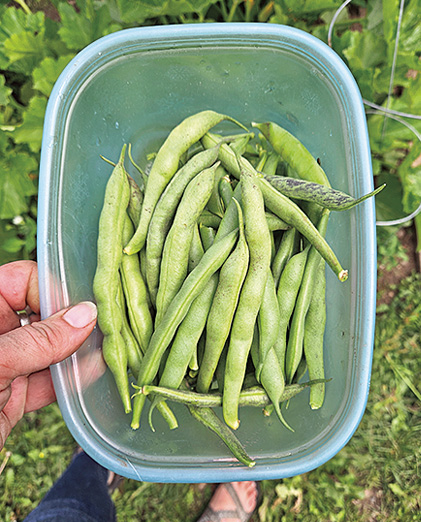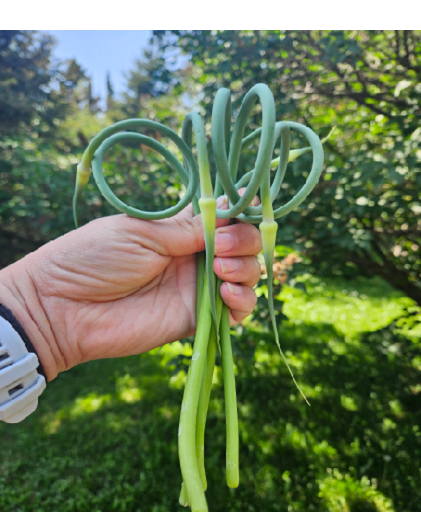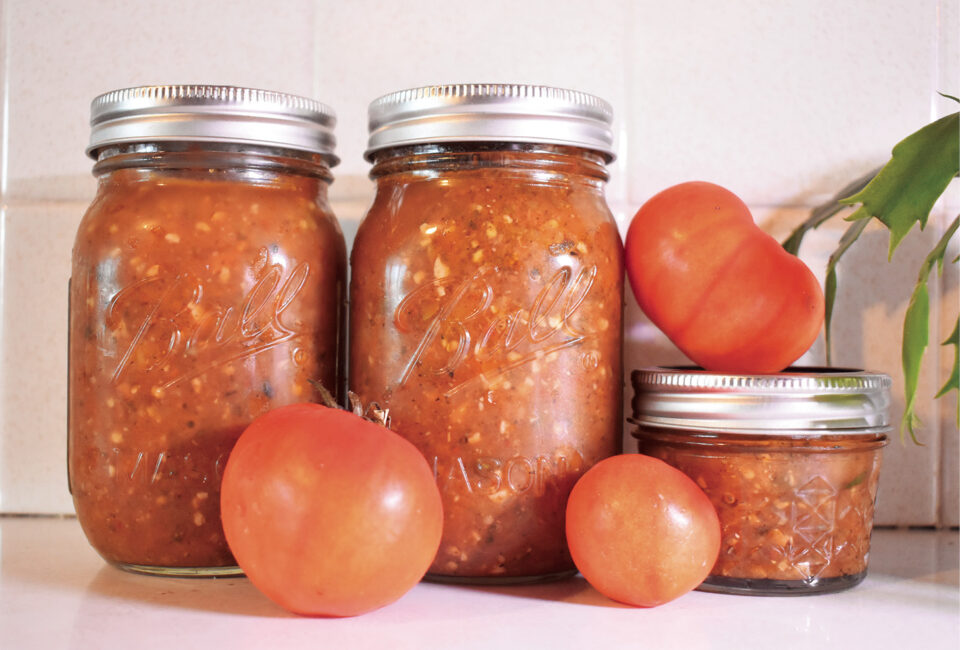With a decent amount of snow still on the ground in early April, I scrolled gardening websites and found myself walking a tad slower by the seed and gardening aisle at Buck’s Hardware.
As the spring days faded away and summer neared, I finalized my list of items to grow in the garden, making sure to add something new this season. By the afternoon of May 2, my kitchen countertop was covered with nearly 80 sets of biodegradable peat pots, and the gardening season had officially begun.
It’s an exciting time of year. Not only to see your plants begin to sprout but to witness the return of life to northern Minnesota in numerous forms. After a lengthy gloomy winter, it fills you with a sense of much-needed rejuvenation. A mere 33 days later, I was transporting a significant portion of my plants to my community garden plot and enjoying the long-awaited feel of gritty soil on my hands.
The gardening season is short in Minnesota’s northern regions, typically starting after the last frost in mid-May and wrapping up before the frost creeps back into the northland in early fall. But during those glorious few months, many gardeners, myself included, pack as many vegetables, potatoes, herbs, and fruit into garden plots hoping to produce and harvest home-grown goods for sustenance and savoring throughout the summer and winter months.
Tending to a garden requires rigorous attention and effort to support and nurture the plants as they grow, particularly in the early stages. But it is gratifying once harvesting season rolls around, and the small tiny sprouts you once spent time talking words of encouragement to suddenly begin to metamorphose into a 13-inch zucchini.
The harvesting season slowly comes to fruition in July and August for a handful of vegetables, sun-ripened fruit, and fragrant herbs. As this happens, it is time to pull out the recipe book and the canning or dehydrating equipment. While I have a few tried and true recipes, I like to find a new style each year to enjoy my delicious garden vegetables. Earlier this summer, I ventured outside the recipe lines with one of my favorite early summer garden items: rhubarb.

For many along the North Shore, June and early July is typically a time to harvest rhubarb and enjoy preparing jams, rhubarb crisp, or other tasty desserts. By early July, I found myself swimming in an abundance of rhubarb from my second garden. Harvesting rhubarb at this time provides a nice balance to the season, allowing someone to reap rewards mid-summer with minimal invested effort.
Every few days, I would head out to the garden and cut a dozen ruby-red stalks and begin preparing jam in the crockpot or whipping up a batch of rhubarb bread. I have a trusted banana bread recipe that I frequently use, and this year, I discovered substituting rhubarb for bananas worked quite well. I decided to soften the rhubarb’s tartness by adding a 1/4 cup of chopped walnuts, a handful of oats, and a couple of dashes of cinnamon.
With my abundance of rhubarb, I also prepared a rhubarb and blueberry jam in the crockpot. Rhubarb breaks down easily when cooked and is a tasty option to use for jam. Once finished, the jam can be put in jars and stored in the refrigerator or canned to be enjoyed on toast or over vanilla ice cream during winter.
Another great way to harvest and save rhubarb during this time is by chopping it into small pieces and using a vacuum sealer to store it in the freezer. Using a vacuum sealer will help eliminate freezer burn and increase the shelf life compared to traditional ziplock bags.
As summer progresses, gardeners who grow garlic can begin to harvest garlic scapes, the long green shoots that extend from the garlic bulb. Garlic scapes are a delightful complement to omelets and pasta, or great sauteed with olive oil, salt, and pepper.
“I like to roast them whole for 10 minutes, just olive oil and salt,” Patty Doherty, a Grand Marais resident and my community garden neighbor, said. “I also have cut them up and put them in a stir fry. They have a nice tempered garlic flavor.”
Doherty has been growing hardneck garlic for the past 10 years. A friend of hers first introduced her to the world of growing garlic, and she has been hooked ever since. “I love growing it,” she said. “I think I have maybe 60 heads of garlic in my garden.”
As late summer arrives, Doherty casually begins to pull one or two garlic from the garden to use in an evening dish or to make pesto. “Making pesto is really simple,” she said.

Doherty puts the ingredients in a blender and then pours the finished pesto into ice cube trays to freeze. During the winter months, she said she enjoys pulling out one or two cubes from the freezer to enjoy with a pasta dish. Doherty uses the following Moosewood Cookbook pesto recipe:
Moosewood Pesto Recipe
Moosewood Cookbook by Mollie Katzen
- 3 packed cups fresh basil leaves (removed from stems)
- 2 large cloves fresh garlic
- 1/2 cup pinenuts, walnuts, almonds, or a combination
- 3/4 cup (packed) fresh chopped parsley
- 3/4 cup fresh-grated Parmesan
- 1/2 cup olive oil
- 1/4 cup melted butter
- Salt to taste
Doherty preserves the remainder of her garlic by braiding three or four heads and hanging it in her front porch entryway for a couple of weeks to dry. Afterwards, she said she preps and cleans the garlic cloves and stores them in a paper bag in the coolest corner cupboard of her kitchen. “And it lasts me all year. It’s great.”
As Doherty was busy prepping pesto in August, I was busy harvesting my first green beans and zucchini from my garden. While I decided to enjoy the green beans immediately, sauteed with some olive oil, garlic scapes, and seasonings, I began prepping the zucchini for the freezer using my vacuum sealer. I like to have a variety of sliced zucchini to use for a vegetable stirfry and shredded zucchini to use for bread during the winter.
In addition to canning and using the vacuum sealer, pickling is another way I love to preserve my garden harvests. For gardeners who grow cucumbers, beets, carrots, green beans, or other fruits and vegetables, pickling is a simple option to preserve harvested goods. Below is a family favorite pickling recipe:
Womack House’s Marinated Cucumbers, Onions, and Tomatoes Recipe
Family recipe
Combine cucumbers, onion, tomatoes, vinegar, sugar, water, salt and pepper, oil, and mint; mix well. Refrigerate at least 2 hours.
- 3 medium cucumbers sliced 1/4-inch thick
- 1 medium onion, sliced and separated into rings
- 3 medium tomatoes, cut into wedges
- 1/2 cup of white vinegar
- 1/4 cup sugar
- 1 cup water
- 2 teaspoons salt
- 1/4 teaspoon ground black pepper
- 1/4 cup vegetable oil
- 1 teaspoon chopped mint
The gardening season will, unfortunately, come to an end here shortly, but by properly preparing and preserving my harvests, I can savor and reminisce the warm summer afternoons spent digging in the dirt and talking to my plants. The ability to grow and harvest my food gives me a profound sense of joy and fills me with a deep sense of satisfaction. The ultimate reward, whether during or after a garden season, is to share my harvest bounties with friends and family.
At the end of the season, I will harvest every last green bean, pea, and potato and prep the garden for the following season by removing and composting the plants and weeds. Many gardeners add manure or soil amendments afterward to add nutrients and enrich the soil. For garlic growers like Doherty, she replants her garlic in October and covers it with straw during the winter. Come spring, half of her garden is already sprouting, and a few months later, she is back to replenishing her pesto supply.






